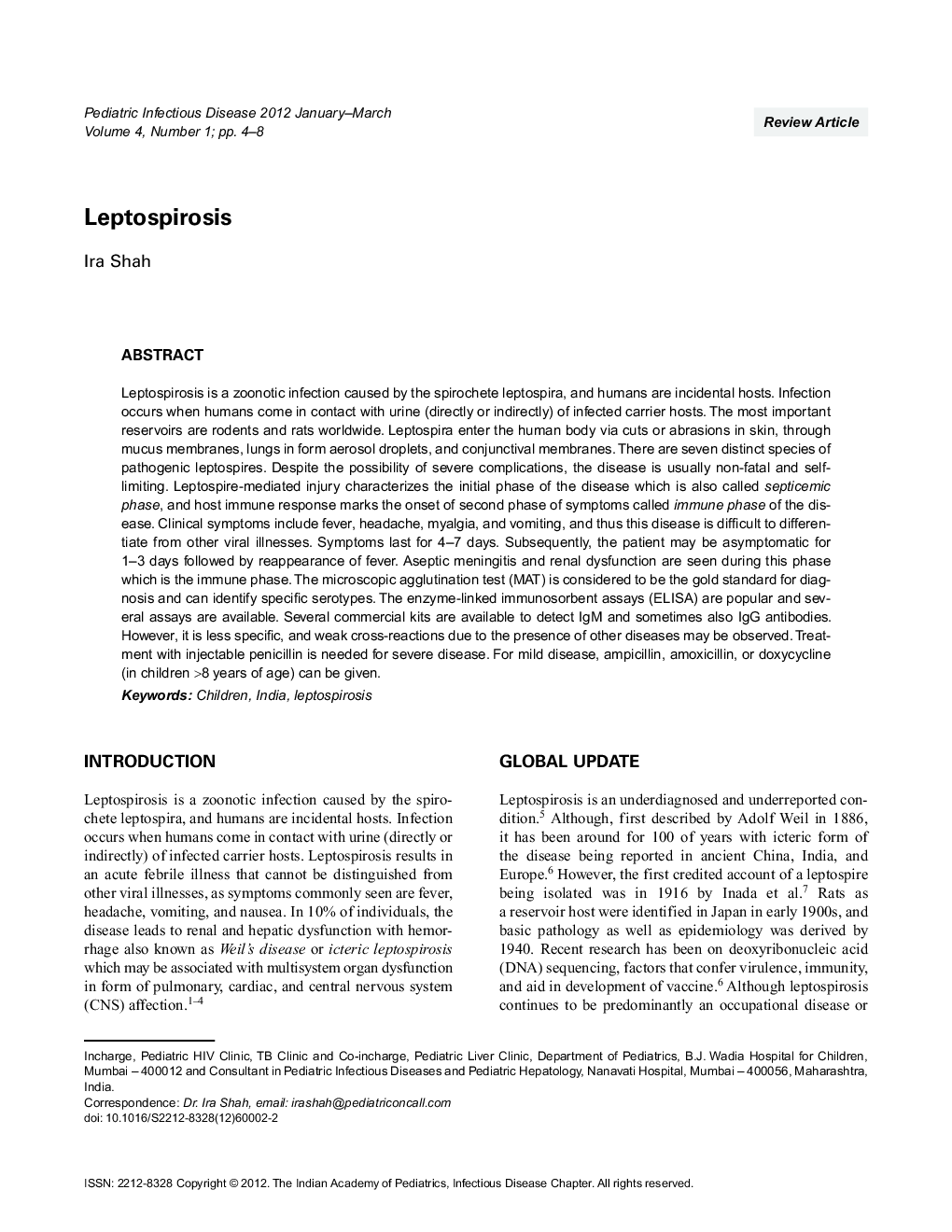| Article ID | Journal | Published Year | Pages | File Type |
|---|---|---|---|---|
| 3382525 | Pediatric Infectious Disease | 2012 | 5 Pages |
Leptospirosis is a zoonotic infection caused by the spirochete leptospira, and humans are incidental hosts. Infection occurs when humans come in contact with urine (directly or indirectly) of infected carrier hosts. The most important reservoirs are rodents and rats worldwide. Leptospira enter the human body via cuts or abrasions in skin, through mucus membranes, lungs in form aerosol droplets, and conjunctival membranes. There are seven distinct species of pathogenic leptospires. Despite the possibility of severe complications, the disease is usually non-fatal and selflimiting. Leptospire-mediated injury characterizes the initial phase of the disease which is also called septicemic phase, and host immune response marks the onset of second phase of symptoms called immune phase of the disease. Clinical symptoms include fever, headache, myalgia, and vomiting, and thus this disease is difficult to differentiate from other viral illnesses. Symptoms last for 4–7 days. Subsequently, the patient may be asymptomatic for 13 days followed by reappearance of fever. Aseptic meningitis and renal dysfunction are seen during this phase which is the immune phase. The microscopic agglutination test (MAT) is considered to be the gold standard for diagnosis and can identify specific serotypes. The enzyme-linked immunosorbent assays (ELISA) are popular and several assays are available. Several commercial kits are available to detect IgM and sometimes also IgG antibodies. However, it is less specific, and weak cross-reactions due to the presence of other diseases may be observed. Treatment with injectable penicillin is needed for severe disease. For mild disease, ampicillin, amoxicillin, or doxycycline (in children >8 years of age) can be given.
